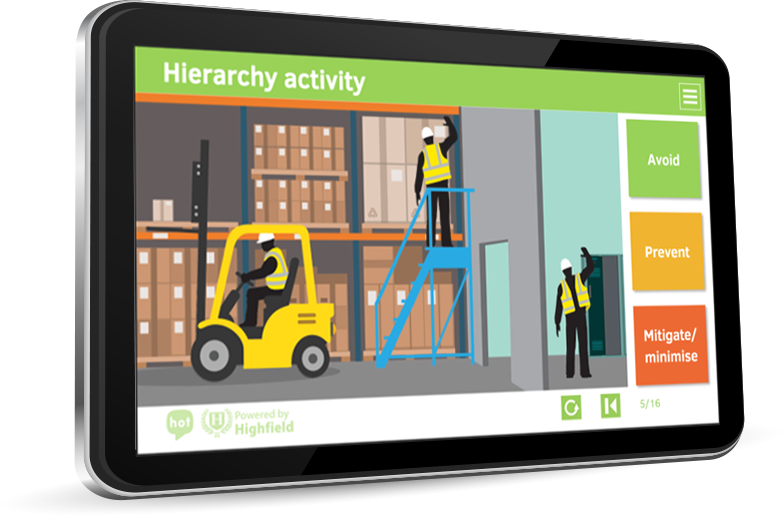This online training course is suitable for all employees, particularly new starter inductions, where a basic understanding of work at height is required.
Have you considered the risks of working at height?
This course is the ideal introduction, covering planning and employing safe systems of work and the use of access equipment to the hazards and risks of working height.
- Working at height
Learn what working at height is
- Planning work at height
What should be considered?
- The work at height hierarcy of control
Explore how tasks should be approached
- Safe systems for working at height
The key to working safely
- Equipment for working at height
An introduction to the types of protective/preventative equipment
- Rooftops and fragile surfaces
Find out more about the different types
- Voids and holes
What should you do?
- Situational awareness
Understanding your surroundings
- Risk assessments
Learn the importance of a risk assessment and knowing when to cease work
| The ideal course for… | Extend your knowledge with… | ||
| a basic introduction for anyone interested in finding out more about working at height | all employees in a workplace to raise awareness of this subject area | anyone working in a team would benefit from equality and diversity training | professionals who work in construction should be equipped with first aid knowledge |
A learning experience that will be remembered

Interactive exercises
Keep your learners and employees engaged with interactive exercises
Written by experts
Content created by our industry and subject matter experts
Compelling imagery
Visual references to help learners understand the information
Simple to follow
Course delivered in bite sized chunks to suit all learners
Quizzes / assessments
Knowledge checks throughout enable learners to stay on track






